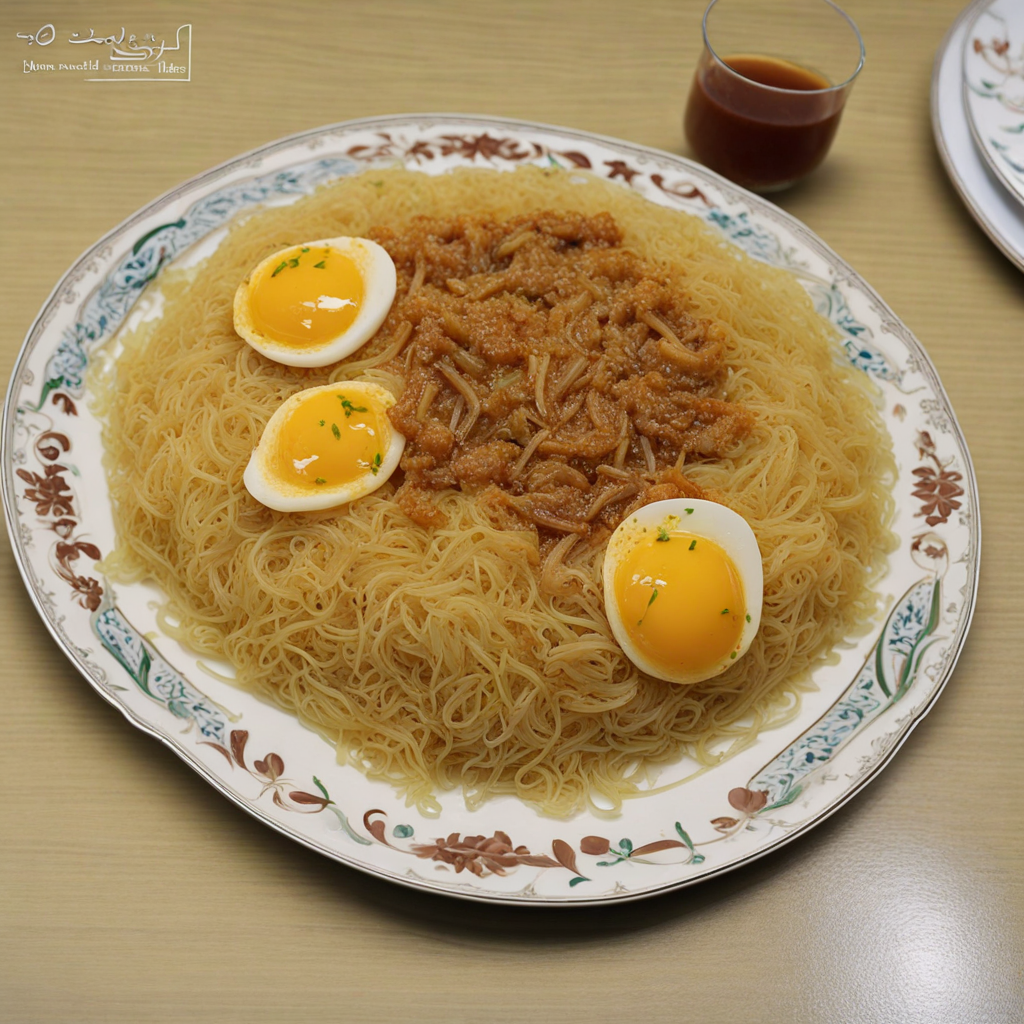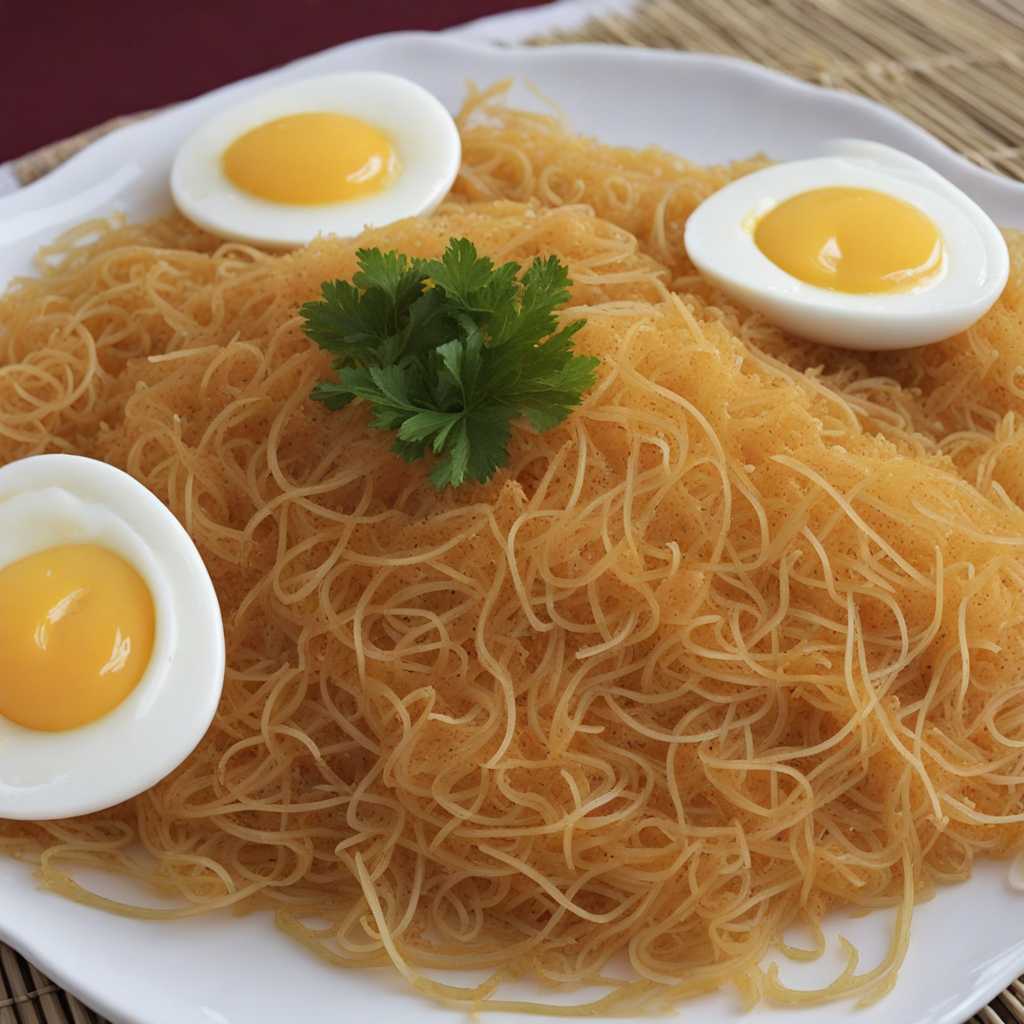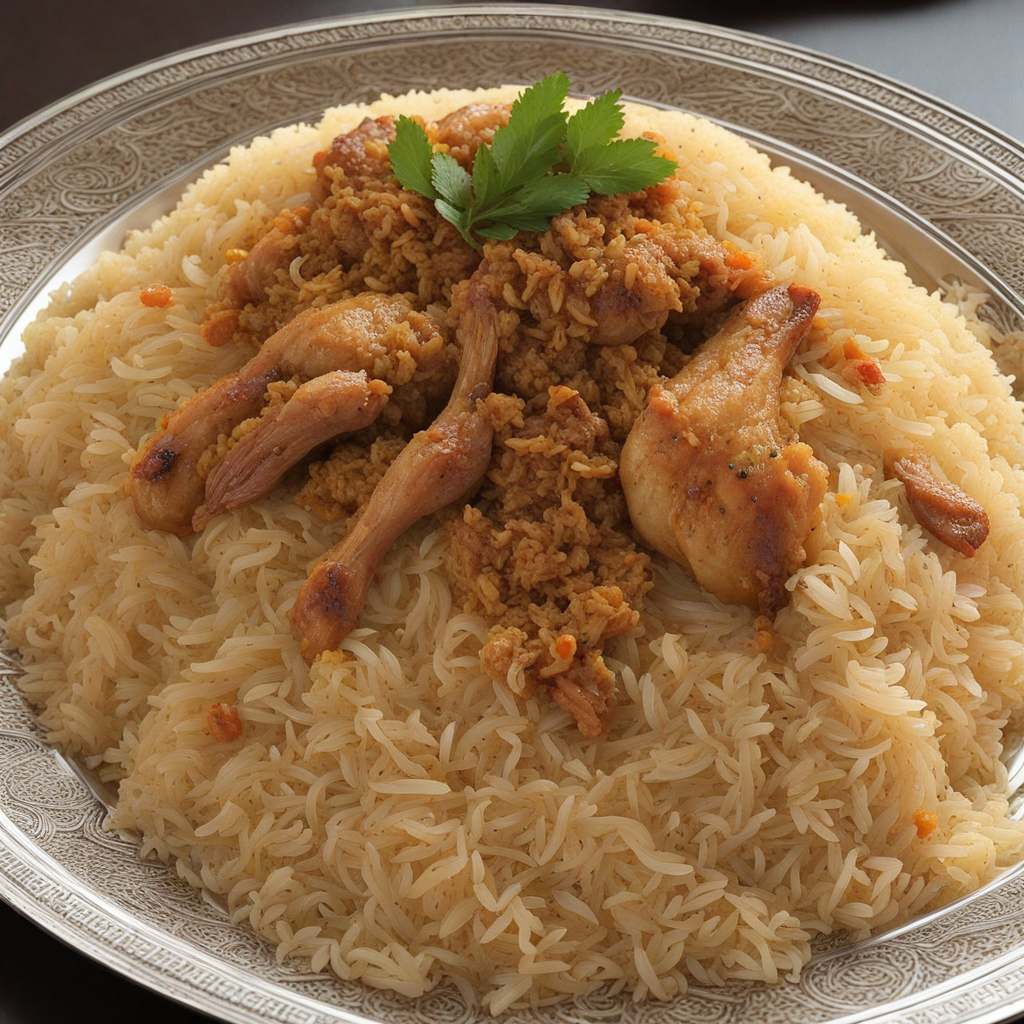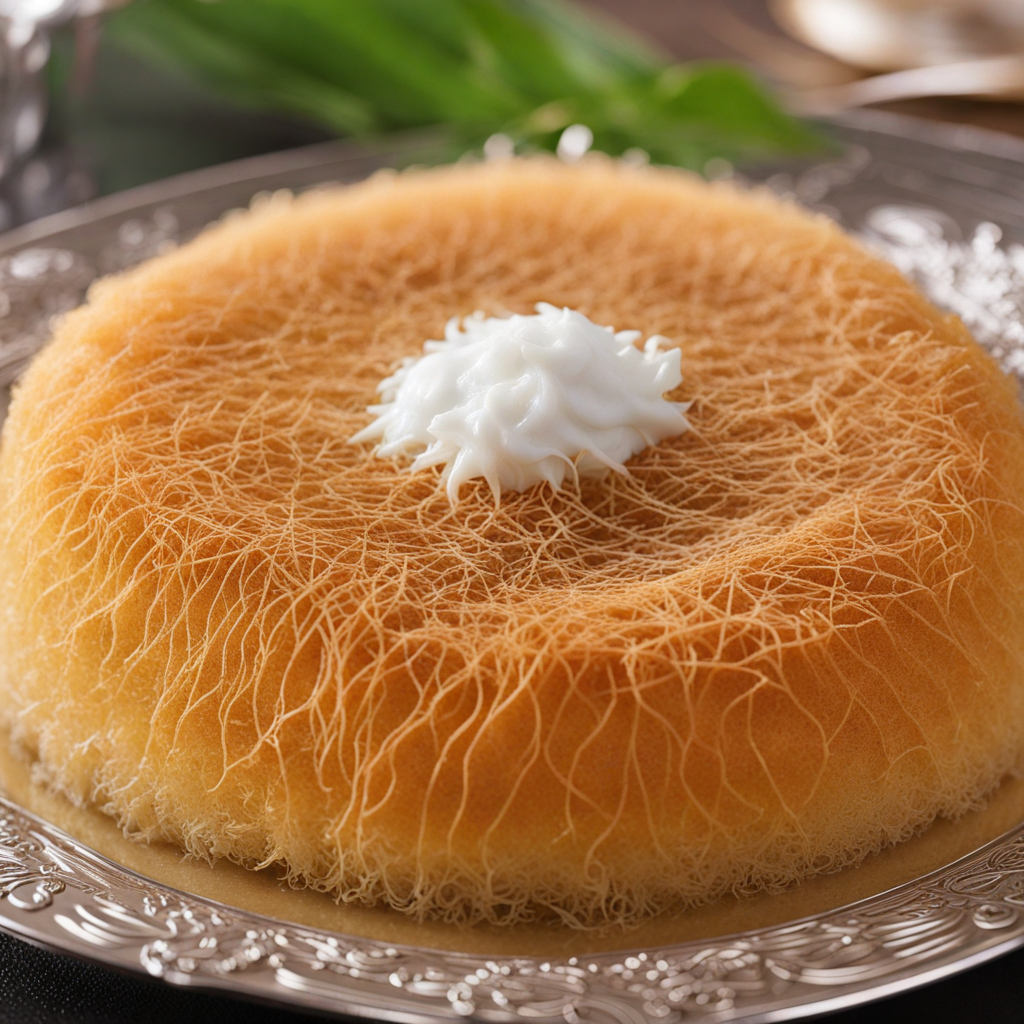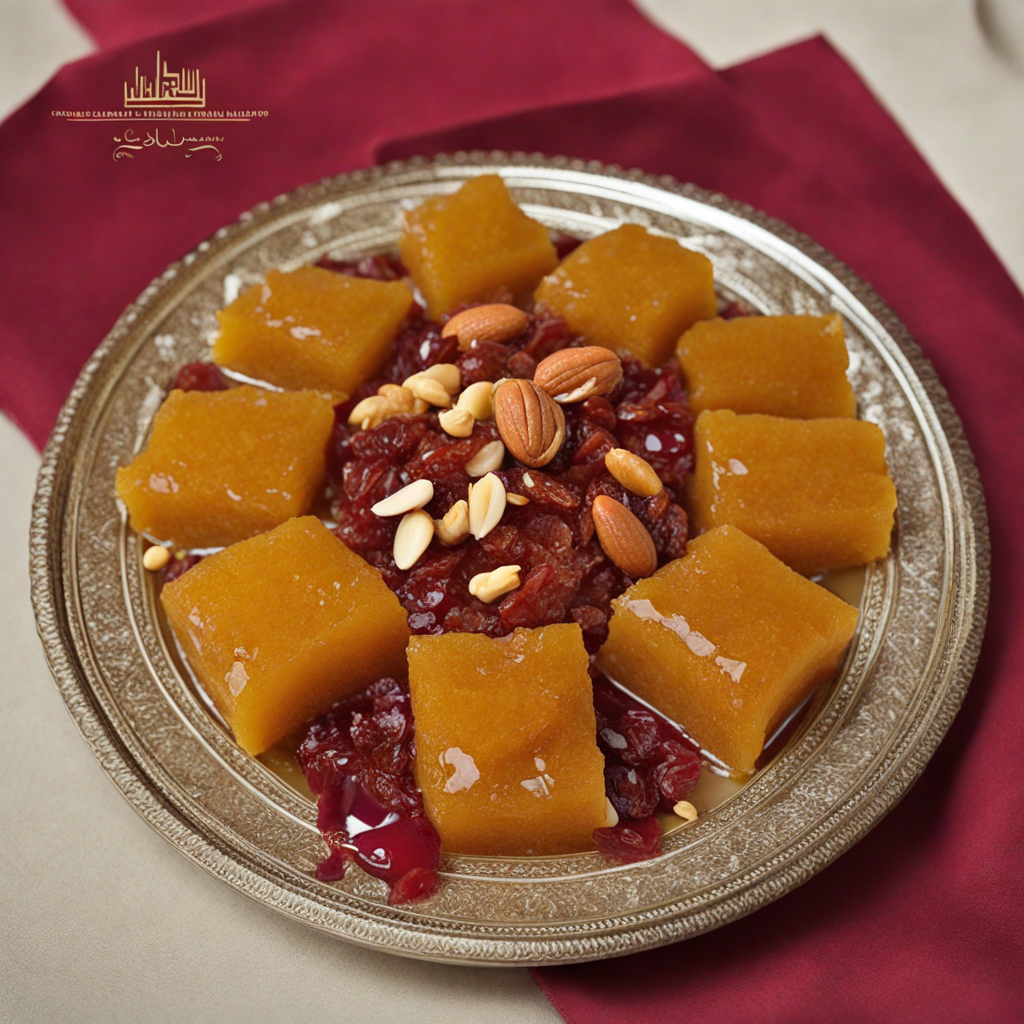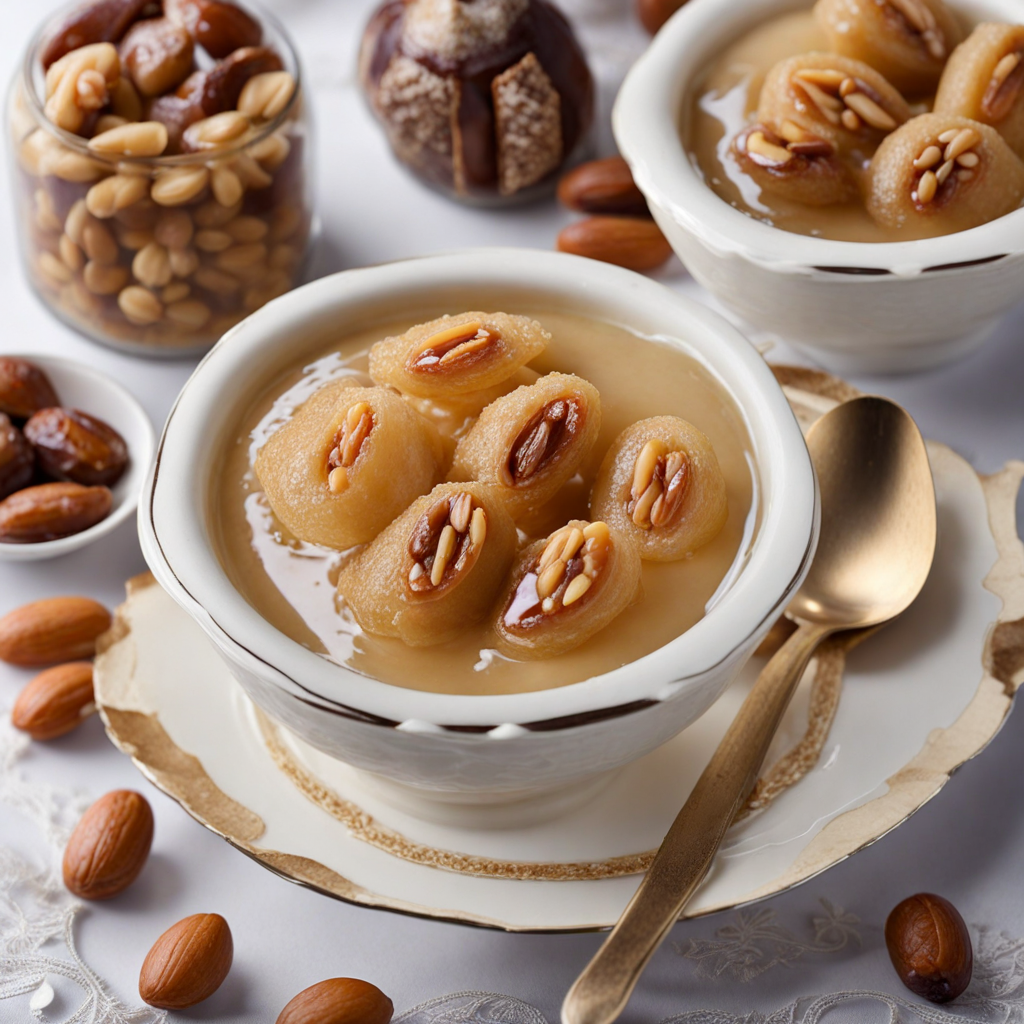Balaleet
Balaleet is a delightful traditional dish from Bahrain that beautifully marries sweet and savory flavors, creating a unique culinary experience. At its core, Balaleet is a fragrant vermicelli noodle dish, finely cooked and often flavored with cardamom and saffron, which give it a warm and aromatic essence. The noodles are typically sweetened with sugar, offering a contrast to the savory components that accompany it, making each bite a harmonious blend of taste sensations. The dish is often enriched with a hint of rose water, enhancing its aromatic profile and adding a floral note that is distinctly Middle Eastern. The preparation of Balaleet usually involves a simple yet meticulous method. The vermicelli is sautéed with ghee or butter until golden brown, then boiled until tender. As the noodles absorb the spices and sweetness, they become luxuriously silky. The dish is often topped with a layer of gently scrambled eggs, which adds a rich and creamy element that complements the sweet base. This combination of textures—soft noodles, fluffy eggs, and delicate spices—creates a unique mouthfeel that is both comforting and indulgent, making it a favorite for breakfast or special occasions in Bahrain. Balaleet is often served with a side of dates or fresh fruit, which adds a refreshing contrast to the warm dish. It embodies the essence of Bahraini hospitality and is commonly enjoyed during festive gatherings or family meals, symbolizing the rich culinary heritage of the region. Whether you're savoring it for breakfast or as a dessert, Balaleet offers an inviting taste of Bahrain, sure to intrigue any food lover looking to explore new flavors and culinary traditions.
How It Became This Dish
The History of بلاليط: A Culinary Gem of Bahrain #### Origins بلاليط, pronounced as “balaleet,” is a traditional dish that holds a special place in the hearts and palates of Bahrainis. This delectable treat is often a breakfast staple, featuring a unique combination of sweet and savory flavors that showcases the rich culinary heritage of the Gulf region. While the exact origins of balaleet are somewhat nebulous, it is believed to have roots that stretch back centuries, influenced by the various cultures and trade routes that intersected in the Arabian Peninsula. The dish primarily consists of thin vermicelli noodles, flavored with cardamom, saffron, and sugar, typically topped with a layer of scrambled eggs. This combination of ingredients is a reflection of the region’s agricultural bounty and its historical ties to trade, particularly in spices and grains. The use of saffron, a prized spice often associated with luxury, highlights the blend of affordability and opulence that characterizes Bahraini cuisine. #### Cultural Significance In Bahrain, food is much more than sustenance; it is a means of preserving cultural identity and fostering community bonds. Balaleet is often served during special occasions, religious celebrations, and family gatherings, symbolizing hospitality and generosity. The dish embodies the spirit of togetherness that is central to Bahraini culture, as families and friends come together to share meals and stories. Balaleet is particularly popular during the holy month of Ramadan, where it is often enjoyed as a pre-dawn meal (Suhoor) to provide energy for fasting. The dish's combination of carbohydrates from the noodles and protein from the eggs makes it an ideal choice for sustaining energy throughout the day. As such, balaleet has transcended its humble origins to become a symbol of cultural resilience and adaptation, reflecting the values of nourishment and community. #### Development Over Time The evolution of balaleet can be traced through the changing dynamics of Bahraini society, influenced by regional and global trends. Originally a dish prepared at home, its popularity has led to its presence in restaurants and cafes, where it is enjoyed by locals and tourists alike. As Bahrain has modernized and embraced globalization, balaleet has adapted to contemporary culinary practices while still retaining its traditional essence. In the early 20th century, the dish was primarily prepared using locally sourced ingredients. Women in Bahraini households would often make balaleet from scratch, boiling the vermicelli and adding spices to create a dish that was both comforting and satisfying. This practice not only reinforced familial ties but also created a sense of pride in the culinary heritage passed down through generations. With the advent of modernization and urbanization in the latter half of the 20th century, the way balaleet was prepared began to change. The availability of pre-packaged ingredients and the rise of convenience foods altered traditional cooking practices. While some families continued to make balaleet from scratch, others embraced these new conveniences, leading to a more diverse range of preparation styles. However, the core elements of the dish—vermicelli, eggs, and spices—remained unchanged. The culinary landscape of Bahrain has also been influenced by the influx of expatriates and tourists, who have brought their own tastes and traditions. As a result, contemporary interpretations of balaleet have emerged, incorporating ingredients and techniques from other cuisines. For instance, some modern variations may include additional toppings such as cheese, vegetables, or even a drizzle of honey, reflecting a fusion of flavors that caters to a broader audience. #### Balaleet in Contemporary Bahrain Today, balaleet is celebrated not only as a nostalgic dish but also as a versatile canvas for culinary creativity. Many Bahraini restaurants and cafes have put their own spin on the traditional recipe, offering variations that appeal to both local and international diners. For example, some establishments now serve balaleet as part of a larger breakfast spread, alongside other traditional dishes such as ful medames (stewed fava beans) and khubz (flatbread). Social media has played a pivotal role in the resurgence of interest in traditional Bahraini cuisine, including balaleet. Food bloggers and influencers showcase their culinary exploits, often highlighting recipes that honor the past while embracing modern trends. This online presence has not only rekindled interest in the dish among younger generations but has also sparked conversations about the importance of preserving cultural heritage in an increasingly globalized world. Moreover, culinary festivals and events dedicated to Bahraini cuisine have further popularized balaleet, allowing chefs and home cooks to share their unique interpretations while fostering a sense of pride in local food culture. These gatherings serve as platforms for education and appreciation, where attendees can learn about the historical significance of balaleet and other traditional dishes. #### Conclusion Balaleet is more than just a dish; it is a reflection of Bahrain's rich history, cultural identity, and enduring traditions. From its humble origins to its contemporary iterations, balaleet embodies the spirit of community, hospitality, and resilience that defines Bahraini culture. As the world continues to change, balaleet serves as a delicious reminder of the importance of preserving culinary heritage while embracing innovation. For anyone visiting Bahrain, indulging in a plate of balaleet is not only a gastronomic delight but also an opportunity to partake in a cultural experience that has been cherished for generations. Whether enjoyed at a bustling café or lovingly prepared at home, balaleet remains a timeless symbol of Bahrain's culinary legacy, inviting all to savor its unique flavors and stories.
You may like
Discover local flavors from Bahrain


